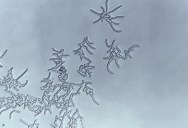Researchers Find Potential New Antibiotic Candidate In The Arctic Ocean

With worries about antibiotic resistant bacteria on the rise, it is welcome news to find a candidate for a potentially new and effective way to fight them.
I think that in the wake of a global pandemic, people appreciate this news even more than they may have five years ago.
Researchers say they found the potential drug in the Arctic Ocean, and indeed, many believe there could be unmined miracles down in the depths.

Currently, a majority of our antibiotics are sourced from actinobacteria in the soil, so it stands to reason that similar compounds might be found in different environments.
The two new compounds show a strong ability to fight harmful bacteria by reducing a bacteria’s virulence. This makes it hard for bacteria to evolve while being less likely to cause side effects in humans.
Dr. Dr Päivi Tammela, one of the study’s authors, issued a statement.
“We discovered a compound that inhibits enteropathogenic E. coli (EPEC) virulence without affecting its growth, and a growth-inhibiting compound, both in actinobacteria from the Arctic Ocean.”
The compounds come from distinct species found in invertebrates in polar waters. The first was from an unknown strain of Kocuria that inhibited bacterial growth.

The second came from an unknown strain of Rhodococcus, and is the more ideal specimen as far as antivirulence. It stopped E. coli from colonizing the host’s gut lining, among other positive outcomes.
“The next steps are the optimization of the culture conditions for compound production and the isolation of sufficient amounts of each compound to elucidate their respective structures and further investigate their respective bioactivities.”
Wherever we can find it, new antibiotics are likely going to become necessary in the future.
If you thought that was interesting, you might like to read about the mysterious “pyramids” discovered in Antarctica. What are they?

Sign up to get our BEST stories of the week straight to your inbox.




